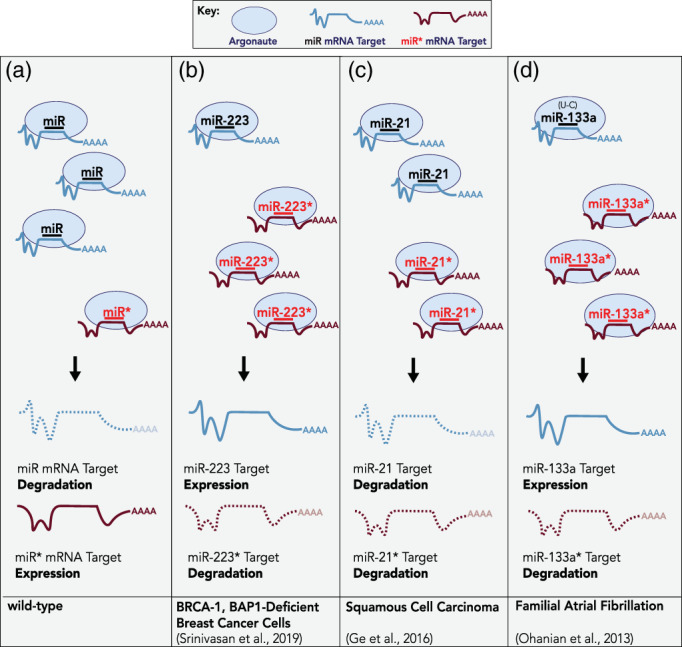FIGURE 6.

Examples of dysregulated miRNA strand selection in human disease. (a) Under wild‐type conditions, the miRNA guide strand is selected and loaded into miRISC in a preferential fashion. As the passenger strand is degraded, mRNAs matching the seed of the miR* strand are maintained in an active state whereas seed‐matched targets of guide‐loaded miRISC are repressed. (b) In BRCA1‐BAP1 deficient breast cancer cells, which cannot perform homologous recombination, miR‐223 arm switching leads to down‐regulation of miR‐223* targets and expression of miR‐233 mRNA targets (Srinivasan et al., 2019). (c) In squamous cell carcinoma (SCC), miR‐21* is upregulated and both miR‐21 and miR‐21* are loaded into miRISC and independently repress mRNAs that contribute to SCC pathogenesis (Ge et al., 2016). (d) A point mutation in miR‐133 (U‐C) associated with human atrial fibrillation alters the relative thermodynamic stability of the miR‐133 duplex ends and leads to selection of miR‐133* (Ohanian, Humphreys, Anderson, Preiss, & Fatkin, 2013). Presumably, altered mRNA target specificity by miR‐133* contributes to atrial fibrillation associated with this variation
